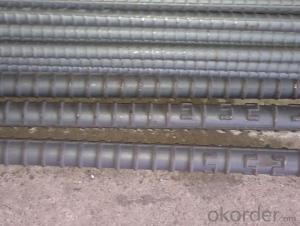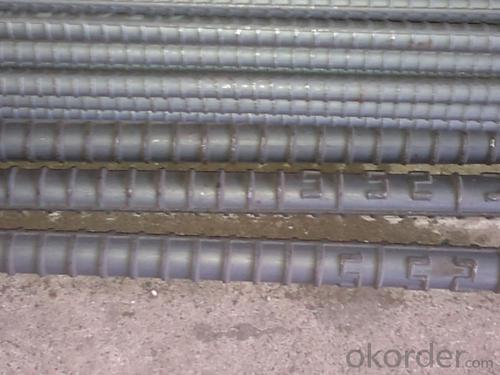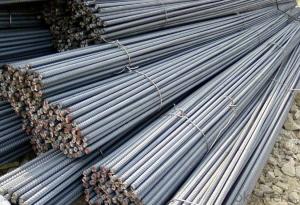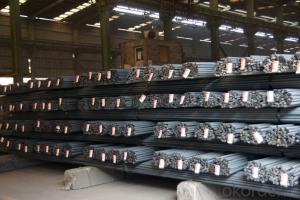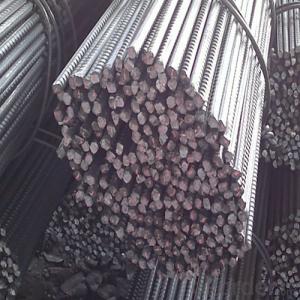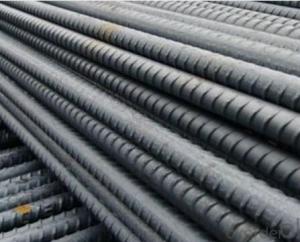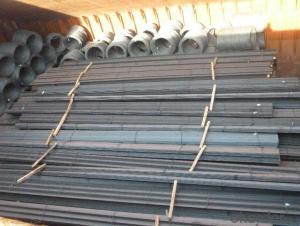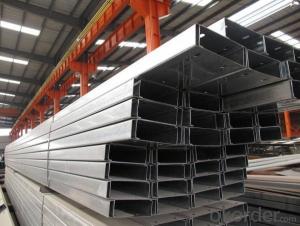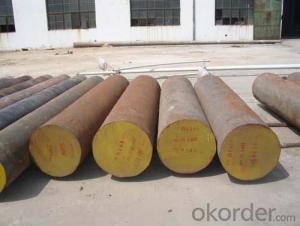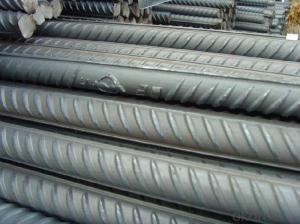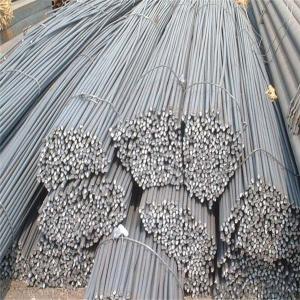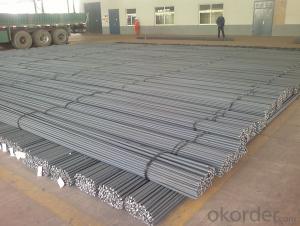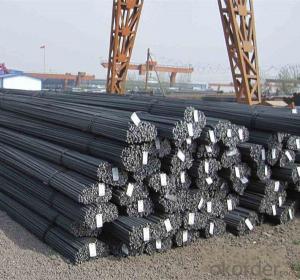Hot Rolled Steel High Qulity D-BAR Deformed Bar Made In China
- Loading Port:
- Tianjin
- Payment Terms:
- TT OR LC
- Min Order Qty:
- 500 m.t.
- Supply Capability:
- 40000 m.t./month
OKorder Service Pledge
OKorder Financial Service
You Might Also Like
Specification
Product Description:
OKorder is offering Hot Rolled Steel High Qulity D-BAR Deformed Bar Made In China at great prices with worldwide shipping. Our supplier is a world-class manufacturer of steel, with our products utilized the world over. OKorder annually supplies products to European, North American and Asian markets. We provide quotations within 24 hours of receiving an inquiry and guarantee competitive prices.
Product Applications:
Hot Rolled Steel High Qulity D-BAR Deformed Bar Made In China are ideal for structural applications and are widely used in the construction of buildings and bridges, and the manufacturing, petrochemical, and transportation industries.
Product Advantages:
OKorder's Hot Rolled Steel High Qulity D-BAR Deformed Bar Made In China are durable, strong, and resist corrosion.
Main Product Features:
· Premium quality
· Prompt delivery & seaworthy packing (30 days after receiving deposit)
· Corrosion resistance
· Can be recycled and reused
· Mill test certification
· Professional Service
· Competitive pricing
Product Specifications:
1, Diameter: 5.5mm-10mm ASTM Standard Reinforced Steel D Bar
10m- 40mm ASTM Standard Reinforced Steel D Bar
2, Length: 6m, 9m, 12m or customized
3, Standard: GB, ASTM, AISI, SAE, DIN, JIS, EN
OEM technology - send detailed technical parameters for accurate quotation.
2, Produce Process: smelt iron - EAF smelt billet - ESR smelt billet -
hot rolled or forged to get the steel round bar and plate
3, Heat Treatment: annealing, normalizing, tempering, quenching
4, Surface Treatment: Black
5, Quality Assurance: We accept third party inspection for all orders.
FAQ:
Q1: Why buy Materials & Equipment from OKorder.com?
A1: All products offered byOKorder.com are carefully selected from China's most reliable manufacturing enterprises. Through its ISO certifications, OKorder.com adheres to the highest standards and a commitment to supply chain safety and customer satisfaction.
Q2: How do we guarantee the quality of our products?
A2: We have established an advanced quality management system which conducts strict quality tests at every step, from raw materials to the final product. At the same time, we provide extensive follow-up service assurances as required.
Q3: How soon can we receive the product after purchase?
A3: Within three days of placing an order, we will begin production. The specific shipping date is dependent upon international and government factors, but is typically 7 to 10 workdays.
Q4: What makes stainless steel stainless?
A4: Stainless steel must contain at least 10.5 % chromium. It is this element that reacts with the oxygen in the air to form a complex chrome-oxide surface layer that is invisible but strong enough to prevent further oxygen from "staining" (rusting) the surface. Higher levels of chromium and the addition of other alloying elements such as nickel and molybdenum enhance this surface layer and improve the corrosion resistance of the stainless material.
Q5: Can stainless steel rust?
A5: Stainless does not "rust" as you think of regular steel rusting with a red oxide on the surface that flakes off. If you see red rust it is probably due to some iron particles that have contaminated the surface of the stainless steel and it is these iron particles that are rusting. Look at the source of the rusting and see if you can remove it from the surface.
Images:
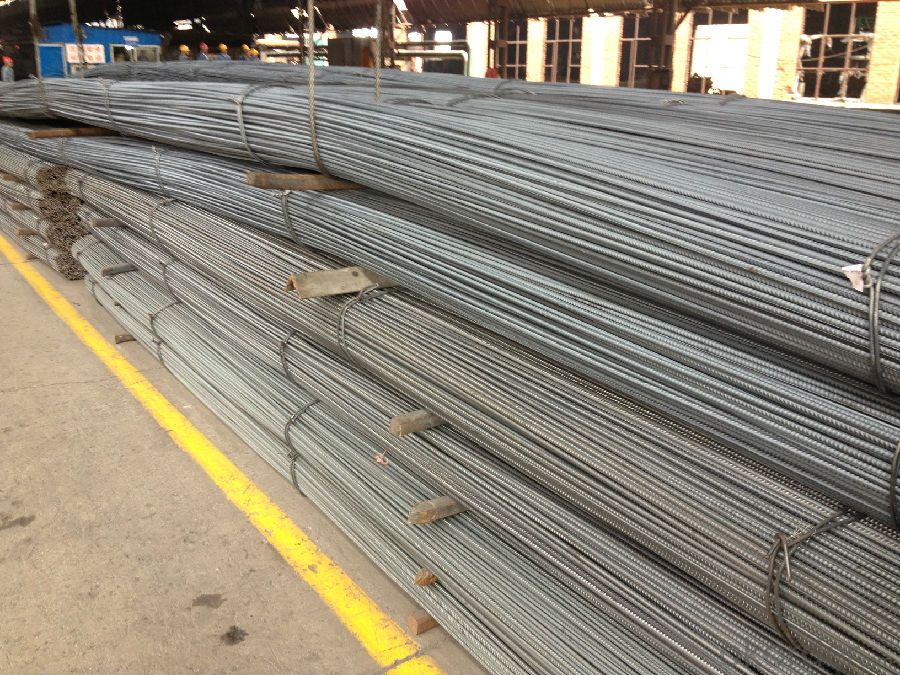
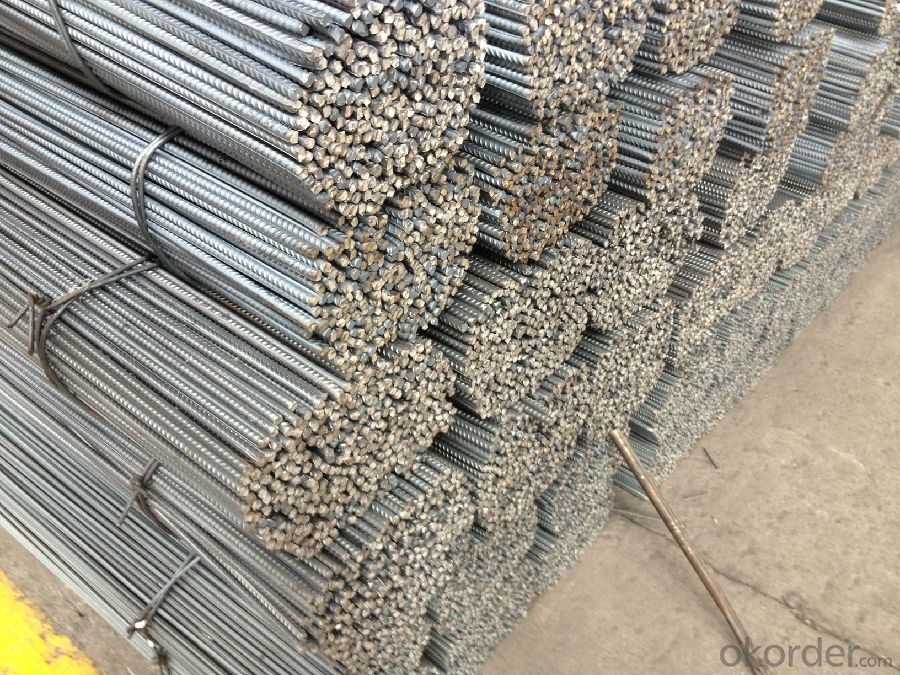
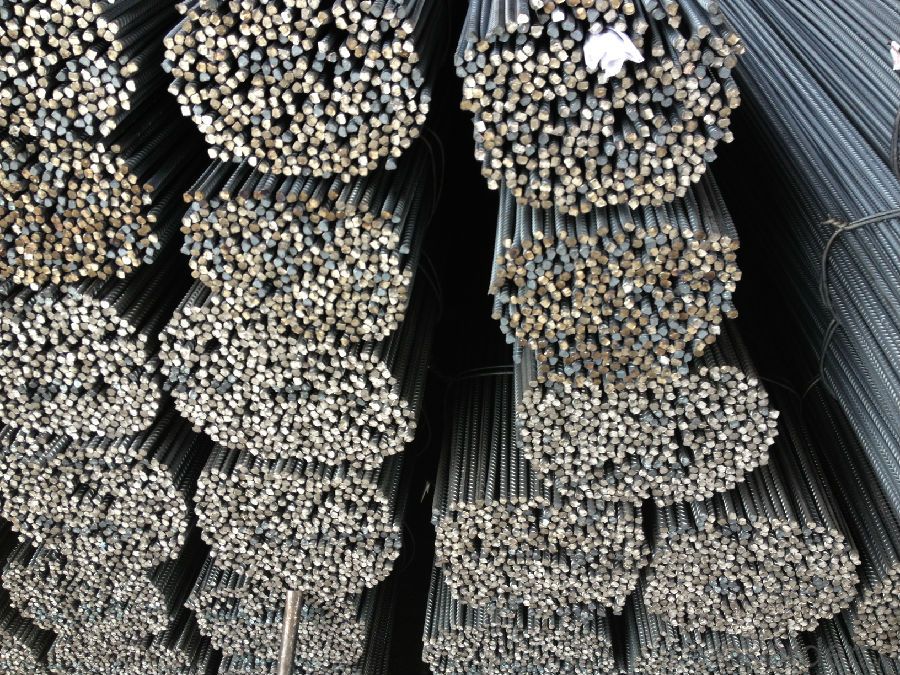
- Q: How do steel rebars improve the strength and durability of concrete?
- Steel rebars improve the strength and durability of concrete in several ways. Firstly, rebars provide reinforcement to the concrete structure, increasing its tensile strength. Concrete is excellent at withstanding compression forces, but it is relatively weak when it comes to tension. By embedding steel rebars within the concrete, the tensile strength of the structure is significantly enhanced. This means that the concrete can resist bending, cracking, and collapsing under heavy loads or external forces. Secondly, steel rebars prevent cracking and shrinkage in the concrete. Concrete tends to shrink as it dries and cures, leading to the development of cracks. However, rebars help to control and restrict this shrinkage by providing additional support and structural integrity. This helps to minimize the occurrence of cracks and ensures that the concrete remains strong and durable over time. Furthermore, steel rebars improve the overall structural stability of the concrete. When concrete is subjected to dynamic loads or seismic activity, it can experience significant deformation or even failure. The presence of rebars helps to distribute the load more evenly throughout the concrete structure, reducing the risk of localized damage or collapse. This enhances the overall stability and safety of the concrete construction. Lastly, steel rebars increase the longevity and durability of concrete structures. The steel used in rebars is highly resistant to corrosion, which is a common issue in concrete exposed to harsh environmental conditions or moisture. By providing a protective layer around the steel, known as passivation, rebars prevent corrosion and maintain the structural integrity of the concrete for an extended period. This ensures that the concrete remains strong, durable, and resistant to degradation over its lifespan. In summary, steel rebars play a crucial role in improving the strength and durability of concrete. They enhance the tensile strength, prevent cracking and shrinkage, enhance structural stability, and increase the longevity of the concrete structure. With the addition of steel rebars, concrete becomes a reliable and long-lasting construction material capable of withstanding various loads and environmental conditions.
- Q: How do steel rebars affect the overall construction schedule?
- Steel rebars can have both positive and negative impacts on the overall construction schedule. On the positive side, rebars, being strong and durable, can enhance the structural integrity of the building, making it safer and more resilient. They also help in speeding up the construction process by providing strength and support to the concrete, allowing for faster curing times. However, the availability and delivery of rebars can sometimes cause delays if there are supply chain issues or if the required quantity is not readily available. Additionally, the installation of rebars requires precision and coordination with other construction activities, which can also impact the timeline. Therefore, while steel rebars can contribute to a more efficient construction schedule, they can also pose challenges and potential delays if not managed properly.
- Q: What are the common defects or issues associated with steel rebars?
- Common defects or issues associated with steel rebars include: 1. Rust: Steel rebars are prone to rusting when exposed to moisture or corrosive substances. Rust weakens the rebars, reducing their load-bearing capacity and compromising the structural integrity of the reinforced concrete. 2. Poor bonding with concrete: If the rebars are not properly cleaned or have a layer of rust, they may not bond well with the concrete. This can result in reduced strength and durability of the reinforced concrete structure. 3. Improper size or shape: Rebars that are incorrectly sized or shaped can lead to structural issues. For example, rebars that are too short or have inadequate coverage may not provide sufficient reinforcement, making the structure vulnerable to cracking or collapse. 4. Improper placement: Incorrect placement of rebars can lead to weak points in the reinforced concrete. This can occur if rebars are not adequately spaced, not aligned properly, or if there are gaps between the rebar and the concrete. 5. Improper storage and handling: Rebars should be stored in a dry and well-ventilated area to prevent rust. Improper storage or handling can result in surface damage, bending, or twisting of the rebars, affecting their performance in the reinforced concrete. 6. Welding defects: Welded rebars may have defects such as improper fusion, cracks, or lack of penetration, which can compromise the strength and integrity of the reinforcement. 7. Overlapping issues: Overlapping rebars is a common practice to ensure continuity in reinforcement. However, improper overlapping, such as insufficient overlap length or inadequate lapping of rebars, can result in weak joints and reduced structural strength. 8. Quality control issues: Inadequate quality control during the manufacturing or installation process can lead to defects or issues in rebars. This can include issues like improper chemical composition, inadequate strength, or deviations from the specified standards. It is crucial to address and rectify these defects or issues during the design, manufacturing, and construction stages to ensure the safe and reliable performance of reinforced concrete structures. Regular inspection, maintenance, and adherence to industry standards and guidelines are essential to mitigate these common issues associated with steel rebars.
- Q: What are the different types of steel rebars used in foundation construction?
- There are several different types of steel rebars that are commonly used in foundation construction. These include: 1. Mild Steel Rebars: Also known as black bars, mild steel rebars are the most commonly used type of rebars in foundation construction. They have a low carbon content and are easy to work with. Mild steel rebars provide good tensile strength and are cost-effective. 2. High Yield Strength Rebars: These rebars have a higher carbon content and are heat-treated to increase their strength. They are commonly used in areas where extra strength is required, such as in high-rise buildings or in seismic zones. High yield strength rebars offer superior resistance to tensile and compressive forces. 3. Epoxy-Coated Rebars: Epoxy-coated rebars are coated with epoxy resin to protect them from corrosion. They are commonly used in areas where the foundation is exposed to moisture or chemicals, such as in marine or industrial environments. The epoxy coating acts as a barrier, preventing water and other corrosive substances from reaching the steel and causing it to rust. 4. Galvanized Rebars: Galvanized rebars are coated with a layer of zinc to protect them from corrosion. The zinc coating provides excellent resistance to moisture and chemicals, making galvanized rebars suitable for use in areas with high humidity or in contact with concrete that contains chloride ions. They are commonly used in coastal areas or in structures such as bridges and parking garages. 5. Stainless Steel Rebars: Stainless steel rebars are highly corrosion-resistant and are used in environments where other types of rebars may fail due to corrosion. They are commonly used in structures that are exposed to aggressive environments, such as in chemical plants or wastewater treatment facilities. Stainless steel rebars are also used in areas with a high risk of corrosion, such as in coastal or humid regions. Overall, the choice of steel rebars for foundation construction depends on factors such as the specific requirements of the project, the environmental conditions, and the level of corrosion resistance needed. It is important to select the appropriate type of rebar to ensure the longevity and strength of the foundation.
- Q: How are steel rebars stored on-site?
- Steel rebars are typically stored on-site in a designated area that is clean, dry, and well-ventilated. They are usually stacked horizontally and separated by wooden blocks or spacers to prevent them from touching the ground or each other. Additionally, rebars may be covered with a tarp or protective sheeting to shield them from moisture and dirt. Overall, proper storage of steel rebars ensures easy access, protects their integrity, and promotes safety on the construction site.
- Q: What is the role of steel rebars in reducing concrete creep?
- Concrete creep, the gradual deformation of concrete over time under sustained loading, is significantly reduced by the incorporation of steel rebars. These high-strength reinforcement bars enhance the structural integrity and durability of concrete structures by providing tensile strength to counteract the forces that cause creep. Under sustained loads, concrete experiences internal stresses that can lead to creep. However, the presence of steel rebars helps distribute these stresses more evenly throughout the structure, acting as reinforcement to absorb and redistribute the tensile forces and minimize concrete deformation. Additionally, steel rebars improve the bond between concrete and reinforcement, ensuring they work together as a composite material. This bond prevents the formation of cracks, which can contribute to creep. Moreover, steel rebars enhance the overall stiffness and rigidity of concrete structures, resisting the deformation caused by creep and maintaining stability over time. In conclusion, steel rebars play a crucial role in reducing concrete creep by providing tensile strength, distributing internal stresses, improving the bond between concrete and reinforcement, and enhancing overall stiffness. Engineers can effectively mitigate the effects of creep and ensure long-term performance and durability by incorporating steel rebars into concrete structures.
- Q: Can steel rebars be used in the construction of power plants or industrial facilities?
- Steel rebars can be utilized in the construction of power plants and industrial facilities due to their exceptional strength and durability. They are an ideal option for reinforcing concrete structures in these types of facilities. With their ability to provide necessary strength and support, they can withstand heavy loads, vibrations, and extreme temperatures that are frequently encountered in power plants and industrial facilities. Moreover, steel rebars possess resistance to corrosion, which is particularly vital in such environments where exposure to moisture, chemicals, and other harsh elements is commonplace. Consequently, steel rebars are widely employed in the construction of power plants and industrial facilities to guarantee the buildings' structural integrity and long-lasting nature.
- Q: Can steel rebars be bent or shaped on-site?
- Yes, steel rebars can be bent or shaped on-site using specialized equipment or tools such as rebar benders or hydraulic benders. This allows for flexibility in adjusting the rebars to fit specific construction requirements or designs.
- Q: What is the difference between rebar and round steel?
- In the use of threaded steel, there is a certain mechanical strength, bending deformation properties and welding process performance.
- Q: What is the lifespan of steel rebars in concrete structures?
- The lifespan of steel rebars in concrete structures can vary depending on several factors such as the quality of the steel, the environment in which the structure is located, and the level of maintenance. However, with proper design, construction, and maintenance, steel rebars in concrete structures can typically last for several decades to over a century.
Send your message to us
Hot Rolled Steel High Qulity D-BAR Deformed Bar Made In China
- Loading Port:
- Tianjin
- Payment Terms:
- TT OR LC
- Min Order Qty:
- 500 m.t.
- Supply Capability:
- 40000 m.t./month
OKorder Service Pledge
OKorder Financial Service
Similar products
Hot products
Hot Searches
Related keywords
